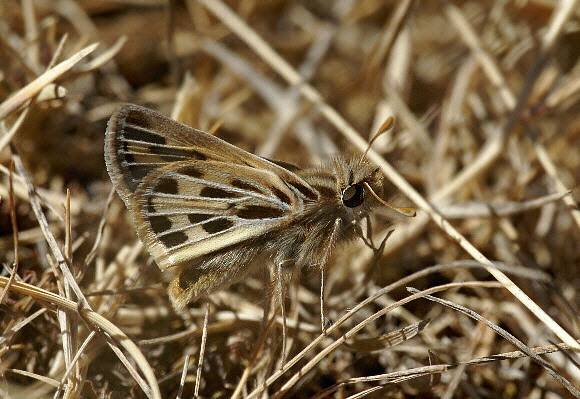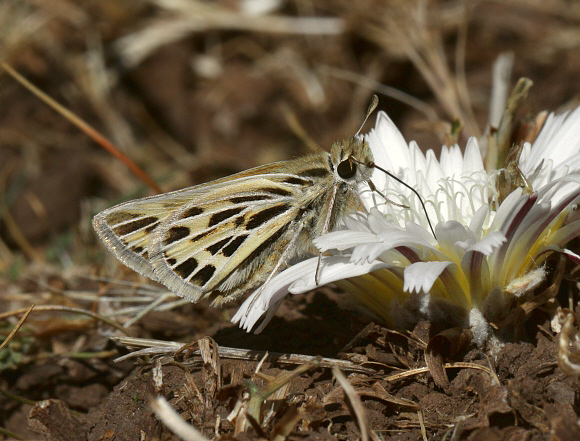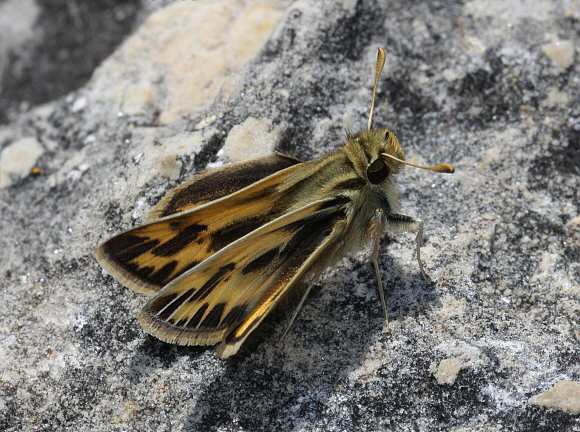
Introduction
The genus Hylephila contains 21 known species which are all confined to the neotropical region, with the exception of phyleus which has a range extending from Canada to northern Argentina.
Hylephila are characterised by having dark brown uppersides, with the forewings heavily marked with streaks and jagged bands of bright orange or yellowish; and the hindwings extensively suffused with the same colour. Males are noticeably darker than females. The underside wings of both sexes are yellowish or straw-coloured, with contrasting brown or blackish spots which vary in size and shape from one species to another. In all species the antennae are short and yellowish.
Hylephila peruana is one of many very similar species which fly on the puna and paramo grasslands of the Andes. These include blancasi, galera, shapiroi, pallisteri, pseudoherrerai, boulleti, fasciolata, tentativa and rossi, most of which are endemic to particular areas of Peru. The precise distribution of peruana is poorly understood due to confusion with other species.

Habitats
Hylephila peruana is one of a very small number of butterfly species which occur on the puna – high altitude grasslands where temperatures drop to near freezing conditions overnight, while daytime temperatures often reach 25°C. These grasslands are only found above the tree-line, and at 3500m or higher are usually above the clouds, and bathed in sunshine for most of the year.
Lifecycle
I have no data regarding peruana. The following however is applicable to the closely related species phyleus, and probably applies also to peruana: The eggs are pale greenish-white, and laid singly on the underside of leaves of the foodplants. The larval foodplants are grasses (unspecified in the case of peruana). The larva when fully grown varies in colour from yellowish brown to drab green, and is marked with dark longitudinal stripes along the back and sides. It lives within a nest constructed by binding grass blades together with strands of silk. The chrysalis varies in colour from pale green to yellowish brown, and is mottled on the back with dark brown. It has a dark longitudinal line along each side, and another along the back.
Adult behaviour
The butterflies are usually encountered in small colonies. Males perch on rocks or among grasses, usually with their wings held in the characteristic Hesperiine position – hindwings outspread, and forewings held up at 45 degrees. In hot conditions at midday they close their wings to regulate their body temperatures.
Both sexes visit a variety of flower species for nectar, including Senecio.

